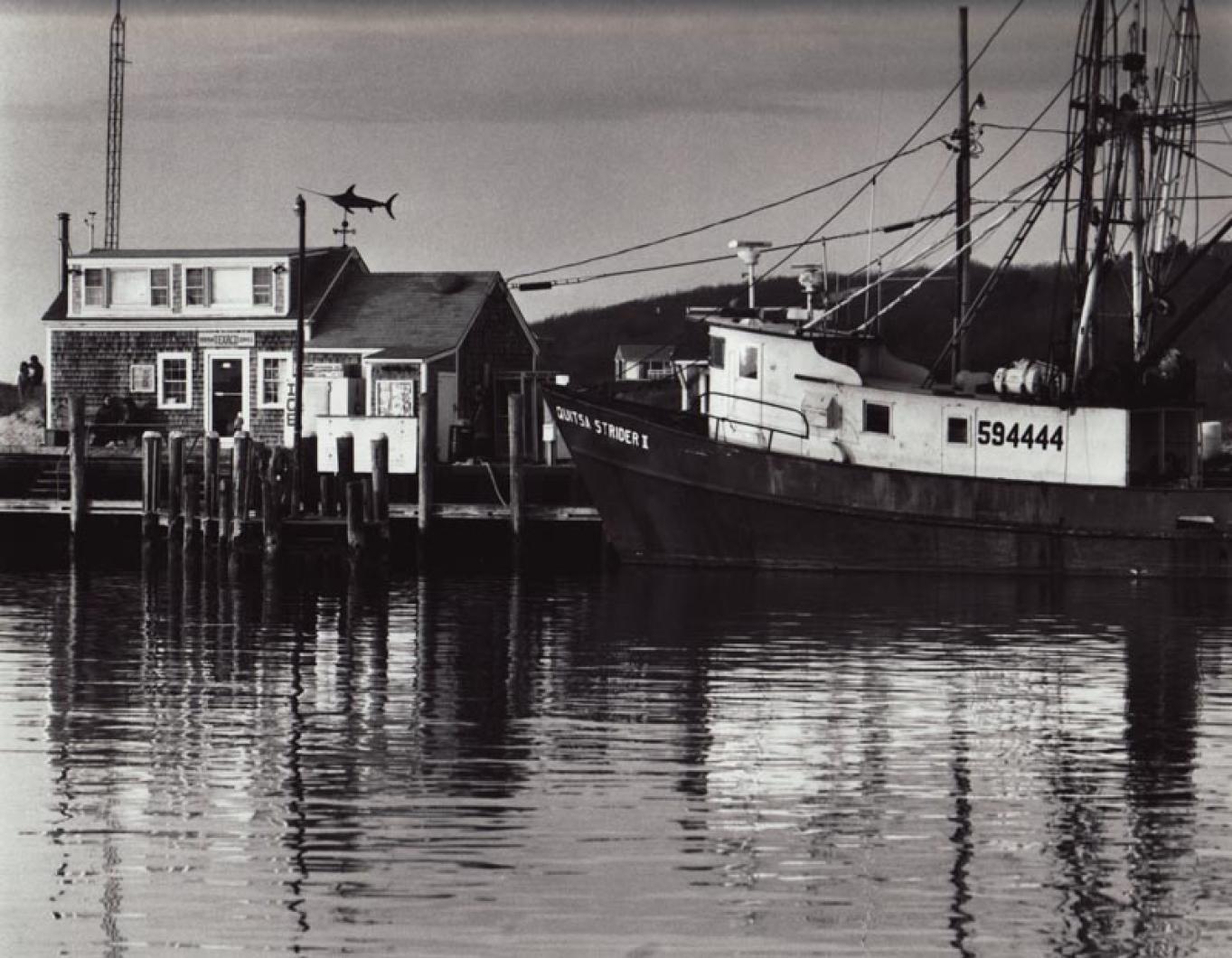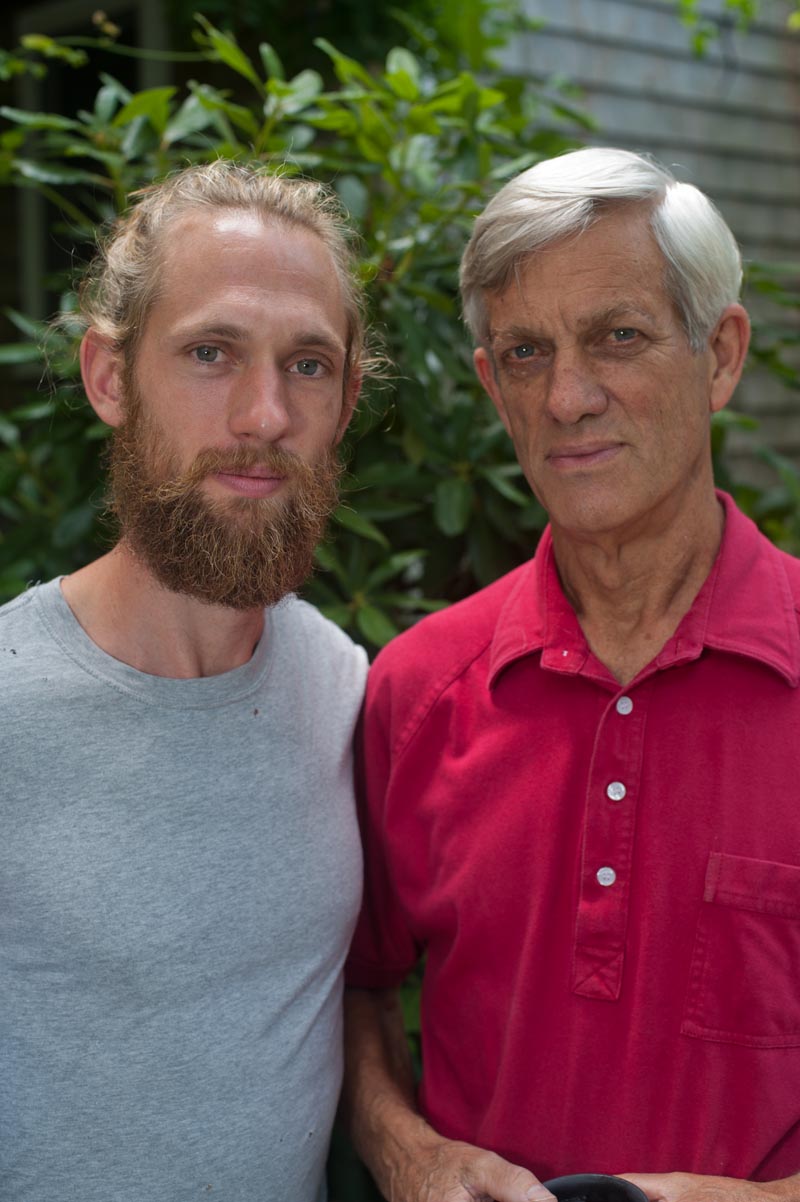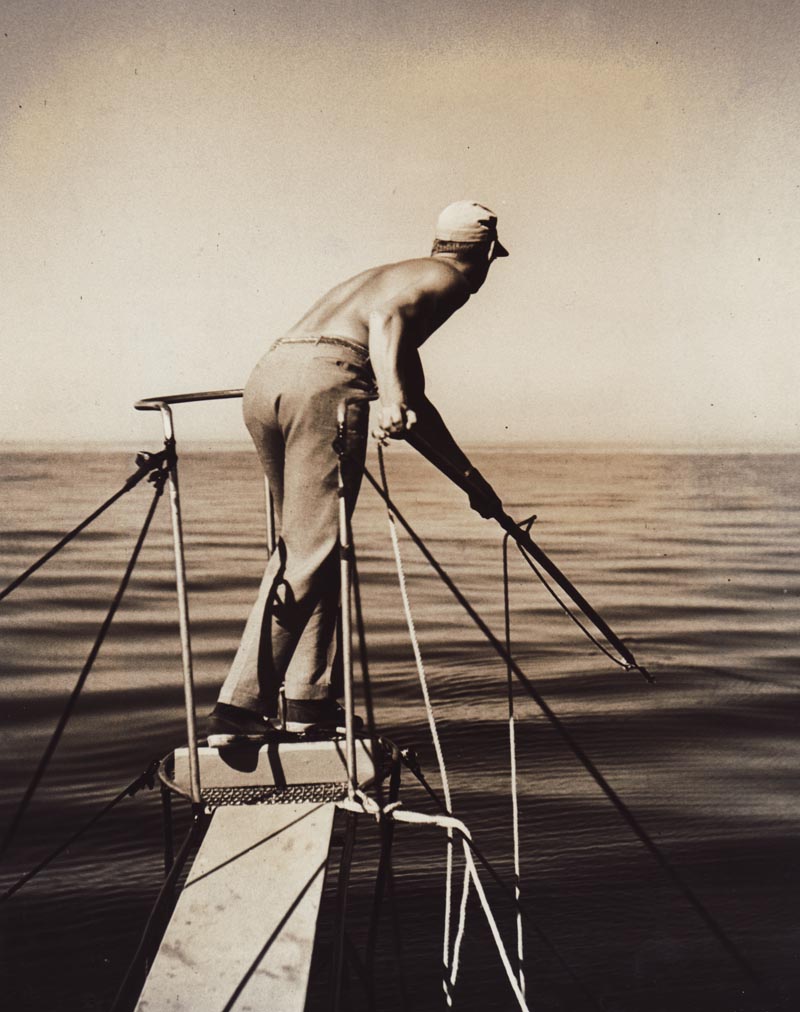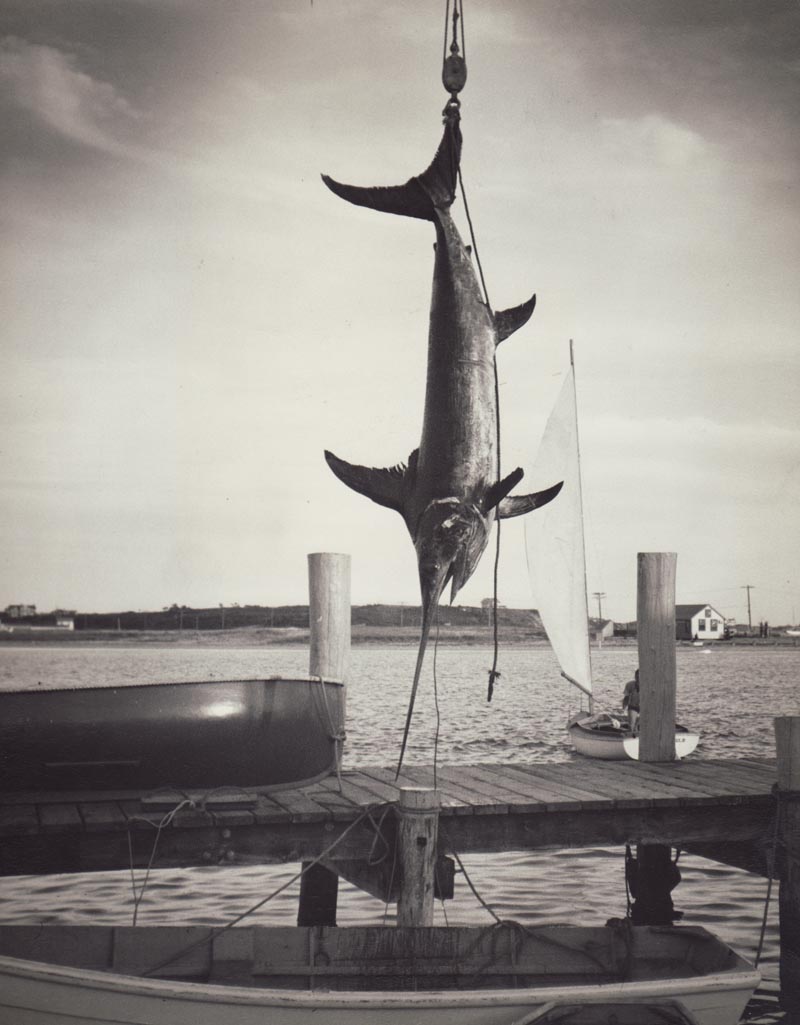Harpooned swordfish, once synonymous with the Fourth of July holiday and a staple of the Menemsha fishing fleet, are no longer being caught by Vineyard fishermen.
Though prevalent in local fish markets this season, harpooned swordfish are now all being caught by fishermen from afar.
The reason has to do with a convoluted bureaucracy, an expensive permit system and waning interest in the age-old method of catching fresh swordfish.
Capt. Gregory Mayhew, the last known Vineyard swordfish captain to have both the skill and the necessary permits, lost his permit two years ago. Mr. Mayhew, his family and many Menemsha fishermen like him, once depended on swordfish for a livelihood.
Swordfish is considered a restored and sustainable fishery, portrayed as having come back from the brink after years of overfishing. But the bureaucratic challenges of permitting local fishermen access to the restored fishery has become an obstacle. Essentially no Vineyard fishermen are out harvesting them.
Mr. Mayhew, 66, remembers growing up fishing with his father, Benjamin Mayhew in the Bridget Ann, a 40-foot, Novi hull lobstering boat. “We could harpoon swordfish within sight of the Vineyard,” he said. He recalls how there was once a fleet of fishing boats out of Menemsha that pursued swordfish. The tails of big swordfish were once nailed to the walls of fish shacks in that fish shack neighborhood as a sign of success. The weathervane at Menemsha Texaco is still a swordfish.
There were even boats that fished out of Oak Bluffs and Edgartown. One hundred years ago swordfishing was a principal summer fishery in these waters.
“Swordfishing was a big part of the Vineyard for the last couple hundred years,” said Mr. Mayhew, who, like his father, was once a state legislator, representing Martha’s Vineyard at the State House. Swordfish were so abundant, Mr. Mayhew said: “It was even used for lobster bait and for fertilizer.”
Mr. Mayhew recalled that up until a few years ago, there used to be a cry for harpooned swordfish from all the local fish markets. The goal of both fishmonger and fisherman was to offer it by the Fourth of July.
“There were always fish 20 miles south of the Vineyard from July through August,” he said. “You might make a day’s pay. We did it up until the 1980s.” Mr. Mayhew recalls a five-day trip in the 1970s when they landed more than 100 large swordfish. The last profitable trip for harpooning swordfish was in 1999, he said.
Atlantic swordfish are found on both sides of the Atlantic Ocean. They are known to spawn in the warmer waters of the Straits of Florida and farther south, to the east to the waters of the Mediterranean Sea. As the fish get larger, they start to migrate up the eastern seaboard along the continental shelf. Many pass south of the Vineyard headed to the fishing grounds of Georges Bank and the Grand Banks in the spring and summer.
While the harpooning of swordfish was the principal way people harvested the fish more than 50 years ago, it has been largely supplanted by the introduction of longlining. The longlining technique involves using thousands of baited hooks attached to one monofilament line that extends for miles. The line would be set at night and tended in the morning.
Longlining may be the most effective way to catch swordfish, but it is also the least environmentally friendly, resulting in unintended catches of a lot of other animals, including sea turtles, marine mammals and underage swordfish.
The Mayhews, who have watched longlining become the predominant way to catch swordfish, believe that it was the longlining fishery that brought about the quick decline of swordfish.
As the population of swordfish declined, there were less swimming South of the Vineyard. By the 1980s fishermen were going out as far as Georges Bank to look for fish. And they employed the help of airplane pilots who would fly over the waters looking for the fish. For that reason, Gregory Mayhew and his brother Jonathan have always shunned using longline fishing out of principle.
The last time Mr. Mayhew caught a swordfish was in 2006, with his sons, Todd and Galen. His attempts and failures to get his license restored might be seen as a parable for the often unnavigable governmental permit process.
After contracting life-threatening medical problems in 2008, Mr. Mayhew allowed his permit to fish for swordfish expire on Dec. 31, 2009. He admits that he did not keep on top of the situation; “My mind was on medical issues,” Mr. Mayhew said.
Efforts to re-enroll failed, partially because he did not attend a fishermen’s disentanglement workshop 2009. The workshop was, ironically, a prerequisite to keep his harpooning license.
“They told me that because I hadn’t attended, I lost my license and couldn’t renew,” Mr. Mayhew said. The license cost $22 a year.
Moreover, the government has limited access to swordfishing since 1999. If Mr. Mayhew now wanted to purchase a harpooning license, it would have to be from another fisherman and it would cost up to $15,000. It would also limit him to 15 fish per trip, which he says is not feasible because it would not cover the cost of the trip 40 or 50 miles offshore.
Subsequent to the loss of the license, Mr. Mayhew appealed to whomever he thought might help. He even wrote to Sen. Scott Brown and got some positive help from Brown’s staff, but as yet doesn’t have the permit.
Randy Blankinship, branch chief for the Highly Migratory Species Atlantic Division, did not speak specifically about the plight of Mr. Mayhew or that of other Vineyard fishermen appearing to be shut out of the fishery. But he did reiterate that the National Oceanic Atmospheric Administration considers swordfish a restored fishery. “The fishery is considered fully rebuilt. Overfishing is not occurring,” he said.
Mr. Blankinship said he is sympthetic to all those who adhered to the tough restrictions that were imposed over the years. “The swordfish is a success story. One of the things we have been able to do now is to look at the possibility of giving additional access to the fishery,” he said. The advisory panel overseeing future management of swordfish is looking at issuing a new permit that would be specific to hand-gear fishermen, which includes harpooners and rod and reel anglers.
Through the NOAA’s own published report, harpooners and rod and reel fishermen are an environmentally preferred fishery. “The types of hand gear being considered are tended (fisherman actively watches for a bite), highly selective and minimize the risk of harming undersized swordfish, non-target species like bluefin tuna and protected species like sea turtles and pilot whales,” the report says.
Federal records show there are at least three Vineyarders who have the necessary permits to go swordfishing. But all three have small fishing boats, two are fully involved in lobster fishing and the third is a conch fisherman.
Looking ahead, Mr. Blankinship said this winter there will be a lot of discussion about the creation of a new swordfish permit that will allow for additional hand-gear fishing, which includes harpooning. Once written it will go to public hearing for comment.
It would be Mr. Mayhew’s hope that his son Todd will be permitted to do what his family has pursued for generations.











Comments (6)
Comments
Comment policy »